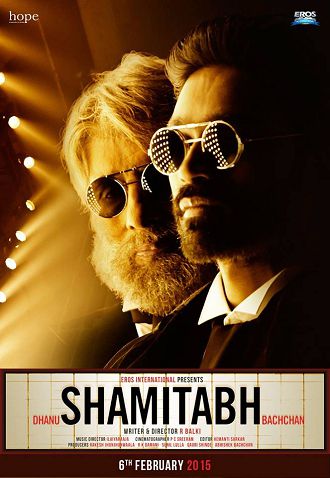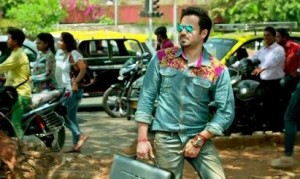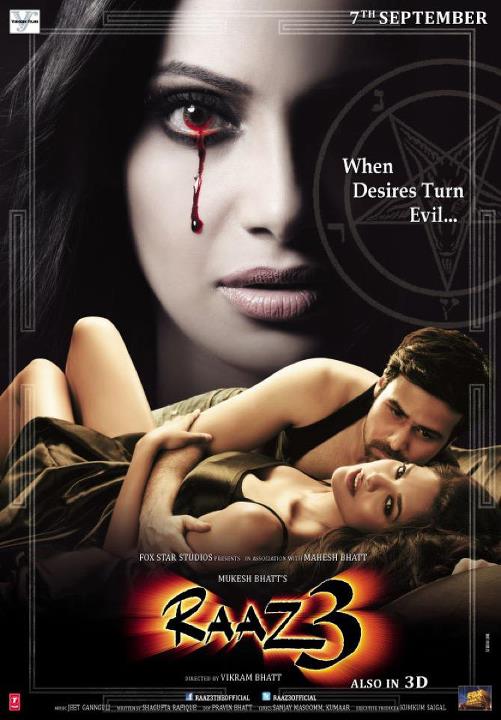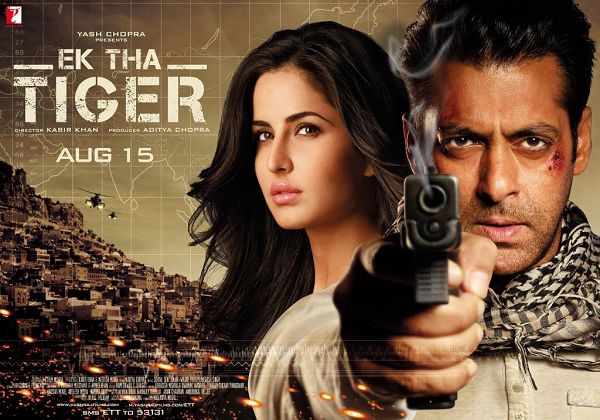 “The problem with The Dirty Picture isn’t that it speaks one language while telling a story in another, but that it isn’t able to make up its mind about where it belongs. And it wouldn’t be a problem at all if Luthria weren’t so insistent on reminding us, despite the chickening-out disclaimer at the beginning, that this is indeed the story of the actress-dancer Silk Smitha. Not only does the heroine bear that most silken of names, Reshma, she also produces a movie named Silk Silk Silk, a testament to the belief that three half-bitten lower lips are better than one (movie-watchers in Madras know, of course, that there really was a film by that name, and that its title on the posters bore three little heart symbols), and she carries on with a sleazy man with a beard, a dhaadikaaran, in other words, which is how the local gossip columns referred to Smitha’s lover. If the fear was that the Hindi-movie audience may not relate to Smitha if her life unfurled a little too realistically, a little too close to her real roots, why not make this the story of Leena Das or Jayashree T or any newcomer to Bombay with stars twinkling in her eyes and sex spilling out of her blouse.”
“The problem with The Dirty Picture isn’t that it speaks one language while telling a story in another, but that it isn’t able to make up its mind about where it belongs. And it wouldn’t be a problem at all if Luthria weren’t so insistent on reminding us, despite the chickening-out disclaimer at the beginning, that this is indeed the story of the actress-dancer Silk Smitha. Not only does the heroine bear that most silken of names, Reshma, she also produces a movie named Silk Silk Silk, a testament to the belief that three half-bitten lower lips are better than one (movie-watchers in Madras know, of course, that there really was a film by that name, and that its title on the posters bore three little heart symbols), and she carries on with a sleazy man with a beard, a dhaadikaaran, in other words, which is how the local gossip columns referred to Smitha’s lover. If the fear was that the Hindi-movie audience may not relate to Smitha if her life unfurled a little too realistically, a little too close to her real roots, why not make this the story of Leena Das or Jayashree T or any newcomer to Bombay with stars twinkling in her eyes and sex spilling out of her blouse.”
“After all, the film-industry references are all Bombay. The overdone dialogues look back at a Salim-Javed era where you could sharpen knives on their edges. The picturisation of the chartbuster Ooh la la reminds you of Nainon mein sapna from Himmatwala and the breathy tune traces its ancestry to Ui-amma-ui-amma from Mawaali, where Jaya Prada’s sari was conveniently carried away by the wind so that she could accompany Jeetendra’s white-shoed exertions in just a blouse and a petticoat. (Ah, good times.) Another frame is reminiscent of the Jaane do na song from Saagar, where Dimple Kapadia shivered in a wet, red sari. Somewhere in the middle, the heroine is seen in the arms of a beefy Hemant Birje lookalike, Jane to his Tarzan. She meets her end like Parveen Babi in Deewar, in bridal red. And the magazine that chronicles her rise and fall isn’t Bommai or Pesum Padam but Stardust. And alongside, the screen bursts into the Naakamuka number, and asks us to buy that the heroes on the Tamil screen came fitted with sagging jowls and paunches (that was the 1970s, not the 1980s) and acted in films that look like Quick Gun Murugan spoofs rather than the real thing.
The result, to a certain eye weaned on a certain kind of cinema, is extremely disorienting. No one asks that a mainstream film be real – that would be a pedant’s picking. It’s entirely reasonable to assume that today’s multiplex audience is not exactly hungering for a grimy, kitchen-sink take on a heroine’s life like Lekhayude Maranam: Oru Flashback, the Malayalam retelling of the actress Shobha’s tragic life. But you have to at least simulate a semblance of reality. We don’t know, for instance, what the porn industry in LA looked like in the 1970s, but Paul Thomas Anderson, through Boogie Nights (which tells a very similar tale, except that the enormous endowment was bestowed on the other gender), made us believe. We bought the clothes, the chunky jewellery, the go-go glasses, the drugs, the rabbity sex lives. But which upper-class household, at the time in Madras, employed servants who wore such creaseless dhotis, and with such impeccably outlined forehead marks? Which starlet, at the time, spoke such impeccable English? You should hear Vidya Balan pronounce “entertainment.”She could be playing Becky Sharp in a Masterpiece Theatre production.
But there’s no denying her commitment to the role, and the ferocity with which she tears into it during the first hour. Walking into the film, I just couldn’t see her as a sex symbol – to my mind, it was like Meryl Streep playing Marilyn Monroe. But Luthria does something wonderful. In the first few scenes, he lets us glimpse the Vidya Balan we know – and slowly he begins to peel her clothes off. So we literally see this traditionally good-looking girl, with the thilakam and the slightest display of the bra strap through a carelessly thrown-on blouse, transition into a heaving, writhing sex symbol. (Had the film been built on a nonlinear structure, and we’d seen the sex symbol first, we may not have bought it.) In the early portions of The Dirty Picture, Balan makes us laugh at all the actresses who spit out quotes that they “deglamourised” themselves for a role when all they did was wear a sari. Balan does the opposite – she “glamourises” herself – and her slow-growing delight in her discovery of her sexuality, in how her body can affect men, is wonderful to witness. The rest of the film is an often-told tragedy: Reshma becomes Silk, becomes a star, falls in love with the wrong men, and falls into a career and personal abyss.
But excellent as Balan is, she cannot fashion a performance around nothing. As long as we see her ascent, we are with her, and we cannot take our eyes off her (or her cleavage, which practically jumps out and smacks us in the face, like a 3-D effect). But her fall isn’t interestingly told, and it’s very difficult to remain invested in Silk once she begins to throw her (ample) weight around. We are not shown why this girl who, at heart, is a good-natured south Indian kid, who believes in god and her own sexuality, would begin to sabotage her career. If the answer is the way she’s treated by the men in her life (a jowly Naseeruddin Shah, Tushar Kapoor with a porn-star moustache), it’s not enough. These relationships are hardly convincing. And worse, Luthria stops treating Silk as a sex symbol and elevates her to a symbol – a symbol for disenfranchised womanhood, a symbol for the film industry’s hypocrisy, a symbol for victimhood at the hands of a patriarchal society. (Her first dance in front of the camera is literally an act of self-flagellation.) However talented you are, how do you play a symbol?
Luthria is so focused on his heroine that he forgets to shade the surrounding characters. Why does the mother who disowned Reshma return at the end, with apparently no conflicted emotions? (And why does that substitute-mother disappear?) Why not give us the scene where she needed to be convinced, in lieu of all those repetitive shots of Silk cussing and smoking and drinking and dragging men to bed. The thoughtless self-destructiveness is not difficult to comprehend – Silk does, after all, say, “Bas dil mein aaya aur kar diya,” pointing to her impulsive nature – but the sameness is difficult to digest after a point. And in case we don’t get it, the director incarnates his thoughts in the form of the critic played by Anju Mahendru, whose sole function is to tell us about what has already been shown, about the actress who played this hero’s co-star and is now playing his mother or whether Silk is a vamp or a victim. Balan, too, is thrust with these dialogues, most regrettably on stage, while accepting an award, where she lights a cigarette and makes the kind of let-he-who-is-without-sin-cast-the-first-stone speech that’s been used in the context of all fallen women from the Bible to Madhuri Dixit in Devdas.”
Tags: Baradwaj Rangan Emraan Hashmi Milan Luthria Naseeruddin Shah Reviews The Dirty Picture Tusshar Vidya Balan








